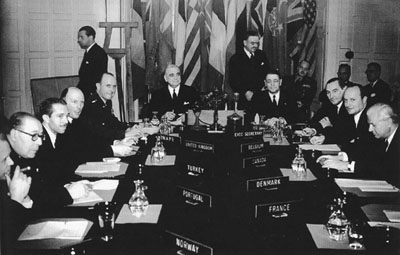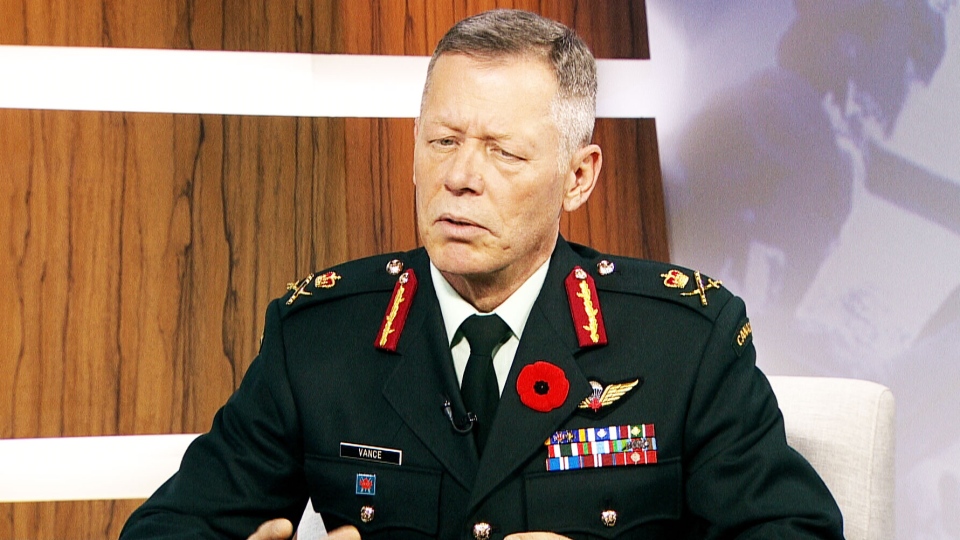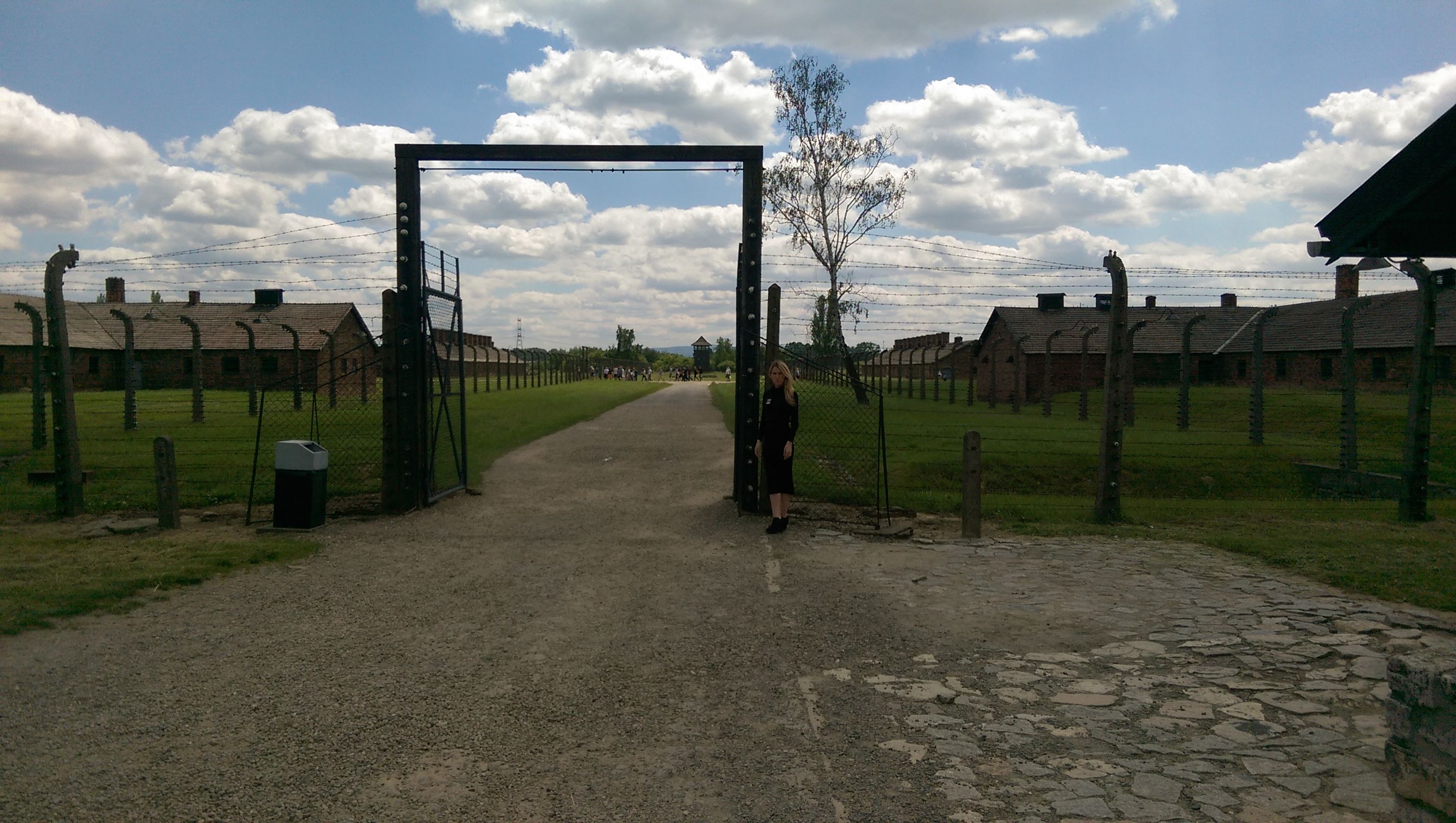After the end of Second World War, despite having become a relatively large military and economic power, Canada was hesitant to take on greater international responsibility for fear of getting involved in a prolonged conflict which would result in more casualties. Despite this sentiment, Canada’s Secretary of State for External Affairs and future Prime Minister Louis St. Laurent noted in January 1947 that a continuation of international defense commitments was vital for the protection of Canadian domestic interests. Originally, this sentiment did not reflect that of the Canadian public. It was not until February 1948 when the Communist takeover of Czechoslovakia occurred, that both President Truman and then Prime Minister St. Laurent reversed the policies of isolationism. This strengthened the belief that the Soviet Union needed to be ‘contained,’ and fostered Canadian interest in discussing solutions on mutual security with European nations.
Collective Security
While the United Nations (UN) was established based on the principle of collective security, which was the idea that an attack on one nation should be responded to by the rest of the international community, there was no provision for nations to collaborate to fight against the threat of communism specifically. The framers of the UN Charter had anticipated that the organization might be incapable of preserving peace and security in the world. Article 51 of the Charter provides a loophole for this which allows for states to declare collective self-defence, and thereby justify the creation of regional organizations to protect their interests in the face of threats to their security.
[captionpix align=”left” theme=”elegant” width=”300″ imgsrc=”http://natoassociation.ca/wp-content/uploads/2013/09/2-Pearson-signs-for-Canada.jpg” captiontext=”Prime Minister Pearson signs the NATO Treaty for Canada, 1949″]
In early 1948, British Foreign Secretary Ernest Bevin began to campaign for a “treaty of alliance and mutual assistance,” which began as an alliance within European states against the threat of the Soviet Union. However, the states realized that in order for their military posturing to be credible, it would need the participation of the United States. The Soviet Union had a massive conventional military force in Eastern Europe that far outnumbered Western forces, which meant that there was little Western Europe could do to hold off an invasion should the Soviets declare war, without the conventional and nuclear deterrence of the United States. Through much negotiation, the Washington Treaty, also known as the North Atlantic Treaty, was drafted, which was the genesis of NATO’s birth. Canadian, British and American representatives composed the core drafting team with participation from all other participatory nations. Finally, on April 4th, 1949 and under the threat of the spread of communism to Western Europe which would threaten continental stability, NATO, Canada’s first peacetime military alliance, was signed under then External Affairs Minister, Lester B. Pearson.
Soviet Response
By November 1952, there were over 16,000 Canadian troops stationed in Western Europe, once more under the integrated military force of American General Dwight D. Eisenhower. This commitment represented the majority of Canada’s defense spending, which accounted for 45% of the federal budget during this time period. Despite this large commitment from a country with a traditionally small military force, alongside commitments by other NATO countries, the Soviets and their allies still vastly outnumbered the Western forces in Europe. In 1955, the Warsaw Pact was created under Soviet leadership to respond to NATO and the rearmament of West Germany. By the late 1950s, Canadian public opinion was becoming skeptical of its large involvement with NATO. This feeling was deepened when soldiers in the Warsaw Pact invaded Czechoslovakia in 1968 after they had attempted to move towards Western-styled policies. Canadians were immediately reminded of the real threat that their soldiers faced in Europe, and clamoured for withdrawal. Under Trudeau, half of the Canadian forces in Europe under NATO were withdrawn in 1969.
End of the Cold War
Political support for increasing Canada’s military contributions for NATO slowly declined until the election of Prime Minister Brian Mulroney in 1987, who attempted to increase Canada’s military commitment to NATO. This was during the period when several reformist governments in the Warsaw Pact began to take power. However, with the fall of the Berlin Wall in 1989 and the collapse of the Soviet Union in 1991, there seemed to be little purpose for a large NATO ground force in Europe. Without consulting NATO allies, the Conservative government declared in early in 1992 that the last of Canadian ground and air forces stationed in Europe would be returning to Canada.
Present Day
Since 1992, Canada has continued its participation in NATO through significant contributions to its other operations. While the threat of USSR is no longer an issue, Canada still had a responsibility as a member of NATO to contribute to international peace and security. From 1992-2004, approximately 40,000 Canadian troops served in the Balkans, having intervened in the Kosovo crisis before continuing its efforts to build strong, sustainable, and democratic societies in the region. Since 2008, NATO has been active in combatting piracy in the Gulf of Aden through Operation Allied Provider, which has provided more than 30,000 tons of humanitarian aid to Somalia. Canada has assisted this effort with naval support through HMCS Winnipeg and HMCS Fredericton. Currently, HMCS Toronto is in the area. More recently in 2011, Canada was part of the NATO coalition in Libya in its mission to promote human rights and the rule of law in Operation Unified Protector.
Future Role
Canada’s ideals are part of what shaped the NATO Charter, while its security interests in allying against the spread of communism, and now the upholding of human rights, have continued to keep in the organization. Universal freedoms and rights as enshrined in the Charter of Rights and Freedoms are the bedrock of Canadian society which must be protected, and NATO is the most effective military mechanism to help do so. Canada shares this respect with the rest of the NATO member states. The country also receives a large number of benefits for its contribution. It receives the same security guarantees as the rest of the members, it maintains its influence in this 28 member strong security organization and it is included in important multilateral dialogue which is vital to combatting cross-border security threats. So while the original purpose of NATO no longer exists, NATO is still very relevant in today’s world, and Canada’s relationship with it is far from over.




